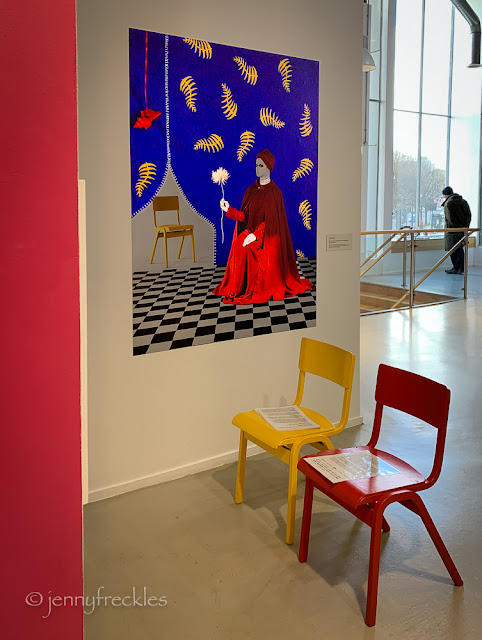The second exhibition I went to see in Bradford was at the Impressions Gallery. It was a photographic display: 'Nationhood: Memory and Hope'. Portraits made by several photographers across the UK: England, Scotland, Wales and Northern Ireland, celebrate the diversity of modern Britain and how we try to shape our identities and communities to make the world a better place.
Alongside those were some photographs by Ethiopian photographer Aïda Muluneh, 'The Necessity of Seeing', commissioned for the UK City of Culture 2025 and shot in Bradford, Belfast, Glasgow and Cardiff. They were very powerful images, strongly coloured and full of symbolism. I liked them a lot, though I'm not sure I could fully grasp the whole of the underlying thrust: 'stories of a nation negotiating between the weight of its past and the challenges of its present'.
Read HERE the artist's own statement about the exhibits. 'Every frame reflects the whispers of quiet truths that linger beneath the surface, waiting to be seen.'
The heavily made up figures, with whited faces, were powerful in that the stylisation removed the sense of the woman as a personality, each making a statement beyond that of an individual... though we did ponder the irony that 'blackface' in performance art is no longer culturally acceptable (to the extent that even our traditional Morris Dancers these days tend to eschew it) but 'whiteface' here seems to be - and maybe that's precisely one of the statements Aïda is making in her art.






Whatever their meaning, or connection to any places, I just feel really sad looking at each of these pictures. The primary colors captivate my eyes, but there is no joy anywhere. The settings are completely unknown, and so don't speak of anything except a brick wall, grass, etc. And when I read the artist's statement, I was hoping for some connection to those she said she wanted to portray, the common people, but instead all I see are these plastic women.
ReplyDeleteCertainly different. I like the colours but the subject s are sad.
ReplyDelete